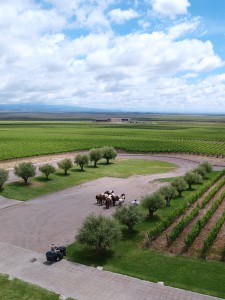
Argentina is a county of unparalleled beauty, from lush pampas, filled with grazing beef (or cows, depending on your view), to the crisp beauty of the lakes, mountains and glaciers of Patagonia, to the arid and largely indigenous desert of the north. Its tourism has long been that of exploring the country of the gauchos, the vibrant city life and the scenic landscapes, but I put to you that there is, for the sophisticated traveler (which on occasion I can be), the Argentine wine route — a now-burgeoning path, awaiting the heavy footsteps of the wine tourist. Of course, this doesn’t mean you need to be a connoisseur: merely a fan of bright skies, the open air and a good malbec.
Within the Mendoza region — where you will find the majority of the country’s wine — Salentein sits in the Uco Valley, an area southwest of Mendoza City, and some 1,000 meters above sea level. The altitude means the temperature is pleasantly cool and perfect for the growing of wine. What sets the winery apart, however, is its grandeur. The valley is sparsely populated with anything, but in the middle of its vast vineyards climbs what could be a Bond villain’s hideout. Inside, the winery descends into an intricately designed basement, complete with a grand piano amidst a mountain of wine barrels and stainless steel vats.
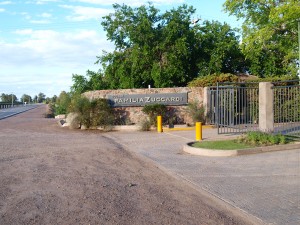
Again in Mendoza, Familia Zuccardi is a family-run winery, and one of the bigger operations in the area. Malbec is the signature grape of the country, so any winery you visit will offer at least one to try, and here it’s understandably excellent — full and spicy without ever coming across as overpowering.
Also on the estate is an ever-changing exhibition space, housing the work of local artists, and Casa del Visitante, the winery restaurant where you can get your empanada and steak fix. If you stay long enough there’s a high possibility of meeting Mr. Zuccardi himself!
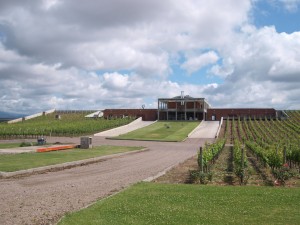
Winning no awards for subtlety, Clos de los Siete sits in a colossal 850 hectares of land. To me and you, that equals over 1,500 football fields. The civilized thing to do with such great expanse is to explore on horseback — incredibly picturesque and tranquil, the space is huge yet manageable and shared by seven wineries, hence the name (siete means “seven” in Spanish). The buildings themselves offer spectacular views across the vineyards while being things of architectural, albeit very modern, beauty. The site sits 60 miles south of Mendoza (as you may now have realized, if you want wine in Argentina, you best go to Mendoza), and is run by Michel Rolland, the French oenologist (as Wikipedia labels it, “the science and study of all aspects of wine and wine making except vine-growing and grape-harvesting”), which speaks for itself in terms of the pedigree of the wines. If you are to try only one of the wines, try the aptly titled “Clos de los Siete,” a blend of grapes sourced from all of the wineries on the land.
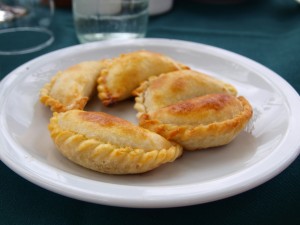
Vasija Secreta lies in the Salta region, but away from the actually city — which, outside of its historic square, is not entirely worth visiting other than to use it as a base from which to explore the surrounding area. A few hours away, through the spectacular Quebrada de Cafayate, is the town of Cafayate, a sleepy (no really, sleepy — siestas last half the day) wine town with dusty streets, charming restaurants and the Vasija Secreta winery. The grounds are exquisite, and with knowledgeable staff offering guided tours, there is a lot to take in. The restaurant on site offers an excellent selection of empanadas and humitas, as well as several different wine tasting options. Perfect to sit and watch the afternoon disappear.
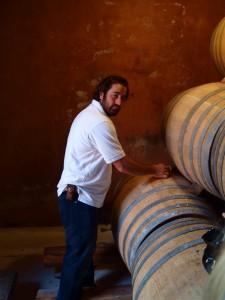
Hacienda del Plata is a winery equipped for tourism like no other: not that it has obtuse, state-of-the-art facilities, but more due to the fact that it’s not all that equipped. Run by a family who’ve owned the land for 100 years, Hacienda del Plata is overflowing with rustic charm. Aided by the fact that, on any visit, you are likely to meet the whole family, there’s an infectious laid-back attitude abundant in the winery’s grounds. On my visit, I was nursing a heavy head from wine tasting the night previous, but was instantly immersed in the life of the González family, from Diego and his sisters, who let me taste some of the wine straight from the barrel (a spectacle, but not necessarily the most palatable), to the new generation of the González family — who I’m told, despite being only just into single figures, are learning the intricacies of different grape varieties by their parents, adding a drop of wine into their bottles at mealtimes. It’s the rustic, family-run winery you wish you’d grown up on.

